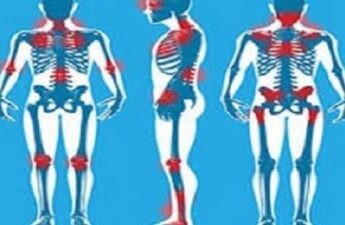Por Adrienne Dellwo.
La hipervigilancia es un estado de tensión constante, en guardia y excepcionalmente consciente de su entorno.
Un pequeño pero creciente cuerpo de investigación sugiere que la hipervigilancia es un sello distintivo de la fibromialgia y puede contribuir al síntoma común de sobrecarga sensorial.
La idea es que nuestros cerebros se vuelvan demasiado conscientes de las cosas, que pueden incluir estímulos dolorosos, ruidos, luces brillantes y actividad general.
Eso podría explicar por qué nuestros cuerpos reaccionan de manera tan dolorosa a una sensación que la mayoría de las personas no experimentaría como dolorosa (llamada alodinia), y también por qué somos sensibles al ruido, la luz, los entornos caóticos y más.
Con la hipervigilancia, no solo notará las cosas más fácilmente, sino que es posible que no pueda desviar su atención de ellas. Cuando algo está jugando en la otra habitación, lo notará de inmediato, se distraerá mucho y probablemente se agite si no desaparece.
Lo mismo se aplica a sentir la presión de una cinturilla o cómo una tela roza la piel. Nuestros cerebros lo perciben como una amenaza, nuestros cerebros se fijan en él y nuestra respuesta fisiológica es mucho más extrema de lo que debería ser.
En muchas condiciones, la hipervigilancia está relacionada con la ansiedad. Sin embargo, un estudio sobre la fibromialgia sugirió que podemos estar hipervigilantes con o sin ansiedad.
La experiencia de la hipervigilancia
El cerebro humano percibe mucha información sobre nuestro entorno de la que nunca somos conscientes.
Hay demasiadas señales bombardeando nuestro cerebro en un momento dado, por lo que hay un proceso de filtrado: las cosas que se consideran sin importancia se filtran y nunca nos enteramos de ellas.
Sin embargo, cualquier cosa que su cerebro considere una amenaza recibe atención adicional. Esta puede ser una respuesta altamente personalizada, dependiendo de lo que su cerebro haya aprendido que es un peligro.
For example, take people with arachnophobia (fear of spiders). So they’ll probably be the first person in the room to notice a bug on the wall or something small moving on the carpet on the other side of the room. Their brains are constantly on alert, especially in places where they have frequently seen spiders.
When they see a spider, they may panic, they may want to run away, they may want to curl up in a safe place and cry. With fibromyalgia, the response to overstimulating environments can be similar.
I have personal experience with that. Once, I stood in line to buy something in a small, chaotic shop where an employee had turned on loud, shrill music with an extremely fast beat. Fortunately, I was with my husband and when I handed him my items and told him I had to get out of there, he understood.
Outside, I sat against a wall, closed my eyes, and breathed deeply until I was no longer in danger of a full-blown anxiety attack. As an arachnophobe, I can see the similarities between that and what happens when I see a spider.
Living with Hypervigilance
Most parents experience a certain amount of hypervigilance when it comes to our children. When you have a newborn baby, the smallest whimper can send you flying out of bed. Notice small hazards that other people don’t, like an exposed electrical outlet or a glass on the edge of a table.
So while hypervigilance is normal in certain situations, it’s not healthy to spend too much time in a hypervigilant state. Police officers and soldiers in combat zones often do this, which is what puts them at risk for PTSD.
Hypervigilance can disrupt sleep, cause avoidance behaviors, and make you nervous and anxious. Being on alert all the time is exhausting. It can make you irritable and prone to outbursts. Panic attacks are definitely possible.
Hypervigilance is an aspect of the disease and not a disease itself. If you think hypervigilance is a problem for you, talk to your doctor about it. This can help shape the direction of your treatment.
Medications are generally not used to treat hypervigilance. Instead, coping techniques and treatment for the disease that caused it are recommended.
Coping techniques may include:
Coping with stress,
Yoga,
Meditation,
Mindfulness,
Deep breathing.
Es una buena idea alejarse de situaciones o entornos que aumenten su hipervigilancia. Sin embargo, si esto conduce a comportamientos de aislamiento o evitación, puede beneficiarse de la consejería.
Aunque a veces puede sentirse desesperanzado, recuerde que con tiempo y esfuerzo, la hipervigilancia se puede superar.



